I recently ran across a blog that listed some revolver recommendations for women. I scanned through the article and found most of the recommendations to be based on superficial factors like the color of the frame. Yep, – I kid you not – pink. The other key factors seemed to play right into the old size stereotype. According to this article, the J-Frame reigned supreme as the ideal revolver – or possibly even the ideal handgun – for women. Today I’m going to submit my thoughts on the best revolvers for women.
I’ve had this article in the queue for a while, and was waiting for the right opportunity to run it. This week I was spurred into action. Greg Ellifritz responded to an article about guns for women. Go read his article, and the article that prompted it. Still, unbelievably, there is a lot of bad information about “guns for women” floating around out there.
Revolvers for Women
Curious, I searched for a few more articles of this ilk and consistently found the same themes over and over: pink guns, tiny guns, guns that are “easy to operate” or “user-friendly”
I ran the idea of “revolvers for women” by my girlfriend. This was at least partially spurred when we were in a gun shop and she noticed pink and purple snubnose revolvers. . . and was not amused (she’s a pre-lock Smith fan, after all!). We chatted about the idea for a while, and I came to some conclusions. It seems that an awful lot of articles about “[fill in the blank shooting product] for women” are based on poorly considered criteria.
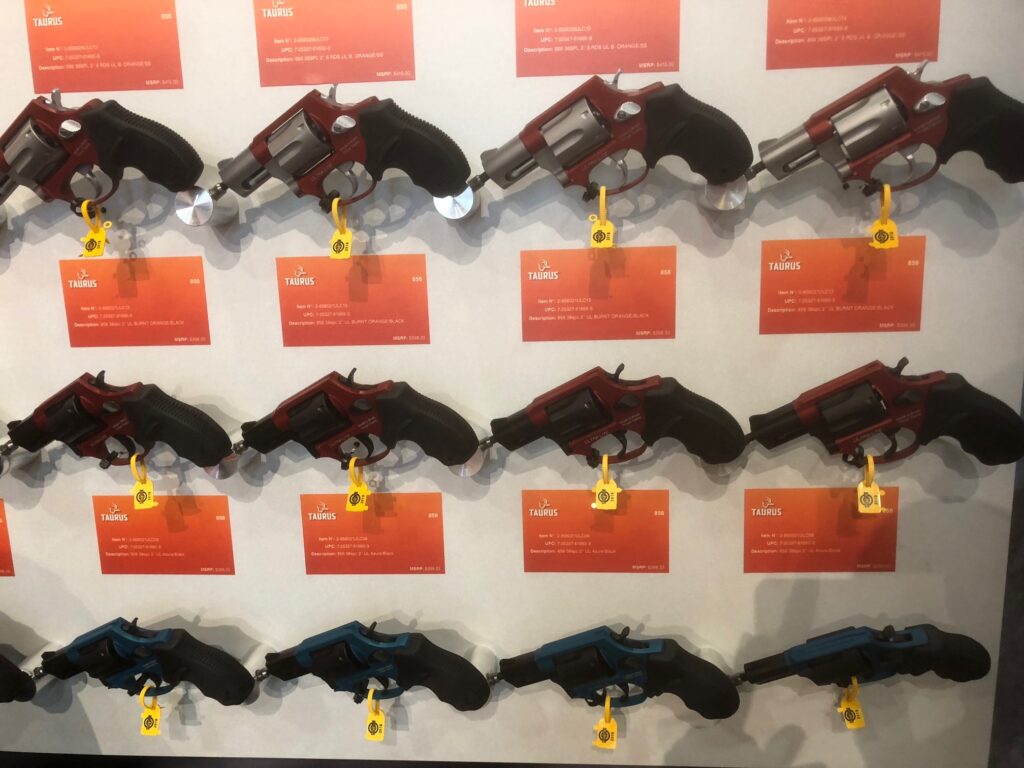
One huge reason for recommending revolvers to women: simplicity. Revolvers seem to be upheld as the ideal carry/defense gun for women because they have a very straightforward manual-of-arms. This assumes that women are incapable of learning and cannot be counted on to train or practice. This assumes they can’t (or won’t) become proficient on a system with a more complex manual-of-arms.
I think the assumption is accurate, but only in the exact same way it is accurate for men. Sorry men, but most of you (and by most, I mean something like 99%) will never seek training beyond basic, state-mandated minimums for your concealed carry permit, if you even bother to seek that level of training. This means a gun with a simple manual of arms shouldn’t be a gendered firearm; people advocating revolvers for women on the basis of simplicity should probably be pushing them on their male customers, too encouraging customers of both sexes to train more, regardless of what they purchase or carry.
Unfortunately, despite being popularly considered a gun that requires no skill, small revolvers are recognized by experts as the domain of the expert. All other things being equal, a smaller revolver will be more difficult to shoot than a larger one (obviously up to a point). To answer the question, “is a J-Frame (or equivalent) the best revolver for a certain woman?” we should first ask another question: “what is the woman’s current level of competency and/or is she willing to practice and seek training?” If the woman in question is willing to seek knowledge, invest in training, and commit to some practice, a small revolver might just be the perfect firearm. Or it very well may not be.
More Bad Criteria
Another criteria common to most of the revolvers recommended to women seems to be size. In articles, gun stores, and family discussions, small revolvers are often recommended to women. Does the majority of the female market want small guns? Maybe, and I really can’t answer that. However, even if the female market desperately demands small revolvers that still doesn’t speak to their suitability.
Secondly, because a woman happens to be female doesn’t automatically mean her hands are small. I absolutely loathe the knee-jerk “woman = small hands = small gun.” Consider the variability of the human form. I have fairly small hands for a man. I have a good buddy who is is about six inches taller than me and has a very muscular fifty pounds on me. His hands, however, are much smaller than mine. I’ve also dated at least two women whose hands were larger than mine.
Better Criteria
Let’s assume you are a woman who is interested in owning/using/carrying a revolver. What makes a good revolver for you? I have compiled some objective criteria that I think make a good revolver. I will recommend a few specific models further down in the article, but understanding what makes a good revolver is more important than specific recommendations. The things that make a revolver well-suited to nearly any purpose, be it defense, training, fun range sessions, or whatever, are these: high quality, an excellent trigger, good sights, and sufficient grip surface.
Criteria 1: High Quality
Any firearm that is relied on for life-and-death defense should be of high quality. This is a problem I see with many of the pink/purple/pastel guns on the market: most of them are from second-tier manufacturers. These guns will usually work (I was impressed with the Taurus I recently reviewed) but there is probably a reason they use marketing gimmicks like a broad range of color options to sell guns. I would recommend sticking to one of the top-tier manufacturers. Ruger is a good example – I’d almost hands-down recommend any of their revolvers. These guns will be far less likely to have problems from the factory. If cared for they will last several lifetimes. None of their revolvers, to my knowledge, come in pink or purple.
There’s another benefit here, too. Popular, high-quality revolvers from top tier manufacturers will usually give you access to the generous aftermarket support. It is very difficult to find holsters, speedloaders, replacement grips, and other accessories for some of the lower-end revolvers unless they are direct knock-offs of larger manufacturers. This is not always true; if you’re purchasing a very new model support may still be limited.
Criteria 2: An Excellent Trigger
One of the most important criteria in a revolver is its trigger. All double-action revolver triggers are going to be long, but there are other qualitative differences. Triggers can be smooth or gritty and light or heavy. Choosing a gun with an excellent trigger will go a long way toward making you accurate with the gun. A rough, gritty trigger can smooth itself out over time; a heavy one will not lighten perceptibly over time.
Smith & Wesson factory revolvers will have a sub-optimal trigger when they are brand new. This can be somewhat corrected with lots of use, both at the range and in dry practice (both of which have other, obvious benefits). The components of the trigger smooth with use. Triggers are not going to get much lighter through use, though. The S&W J-Frames are perennial favorites as “purse guns,” but their triggers are notoriously heavy. This can be corrected with the addition of an Apex Duty/Carry Spring Kit or TK Custom’s J-Frame Spring/Firing Pin Kit, but there are also excellent options available out of the box.
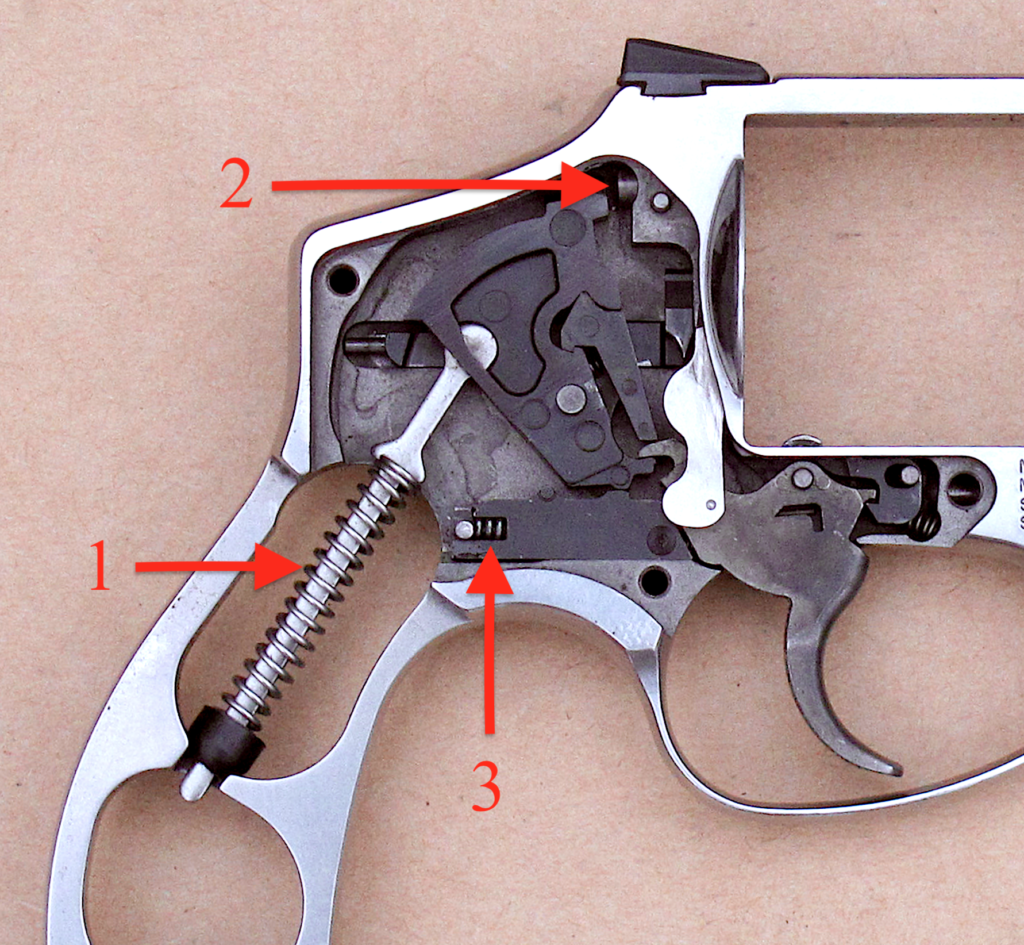
The Colt Cobra and King Cobra both have a different trigger mechanism than the S&W J-Frame and a lot of its direct competitors. While the trigger is known for “stacking” (becoming heavier throughout its travel) the triggers on these guns is far lighter (and I would contend, far smoother) than Smith & Wesson triggers. The Kimber K6s and Ruger LCR were designed from the ground up to have substantially better triggers than S&W’s J-Frames, as well.
Criteria 3: Good, Visible Sights
I’m also a fan of revolvers with the best possible sighting situation. Preferences vary based on the shooter. For some, good sights might simply mean a plain blade with some pink or orange nail polish or model paint applied. For others it might be a fiber optic front or a set of night sights.
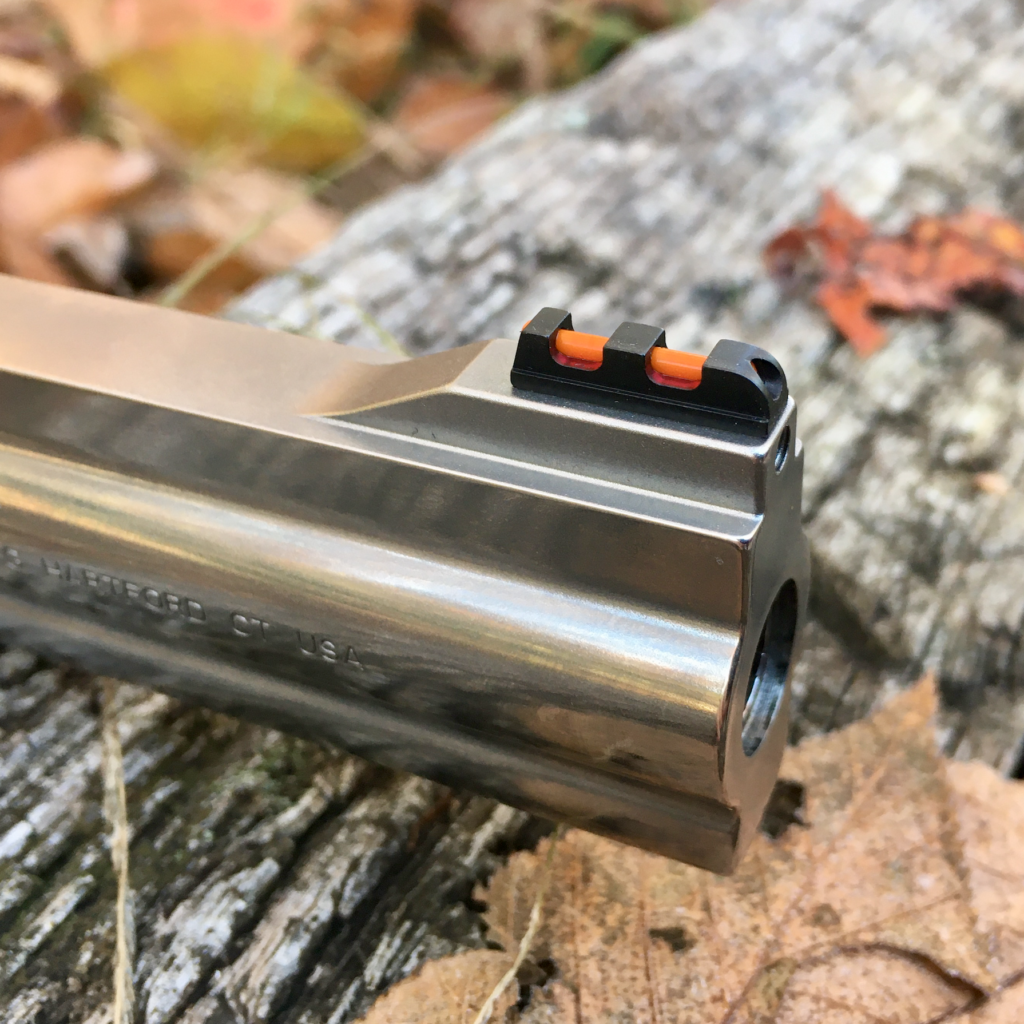
Generally revolvers with front sights that are pinned in place (rather than milled directly onto the barrel) allow for the interchange of the front sight. Some, though certainly not all, revolvers allow for the replacement of the rear sight, as well. All other things being equal, I would probably be biased toward revolvers with interchangeable sights. Maybe the best current-production example of this is the Kimber K6S, which has interchangeable front and rear sights, and both fiber-optic and night sight replacement options available directly from Kimber. The Colt Cobra/King Cobra and Ruger LCR both have pinned front sights; Ruger provides variety of factory replacement options for the LCR.
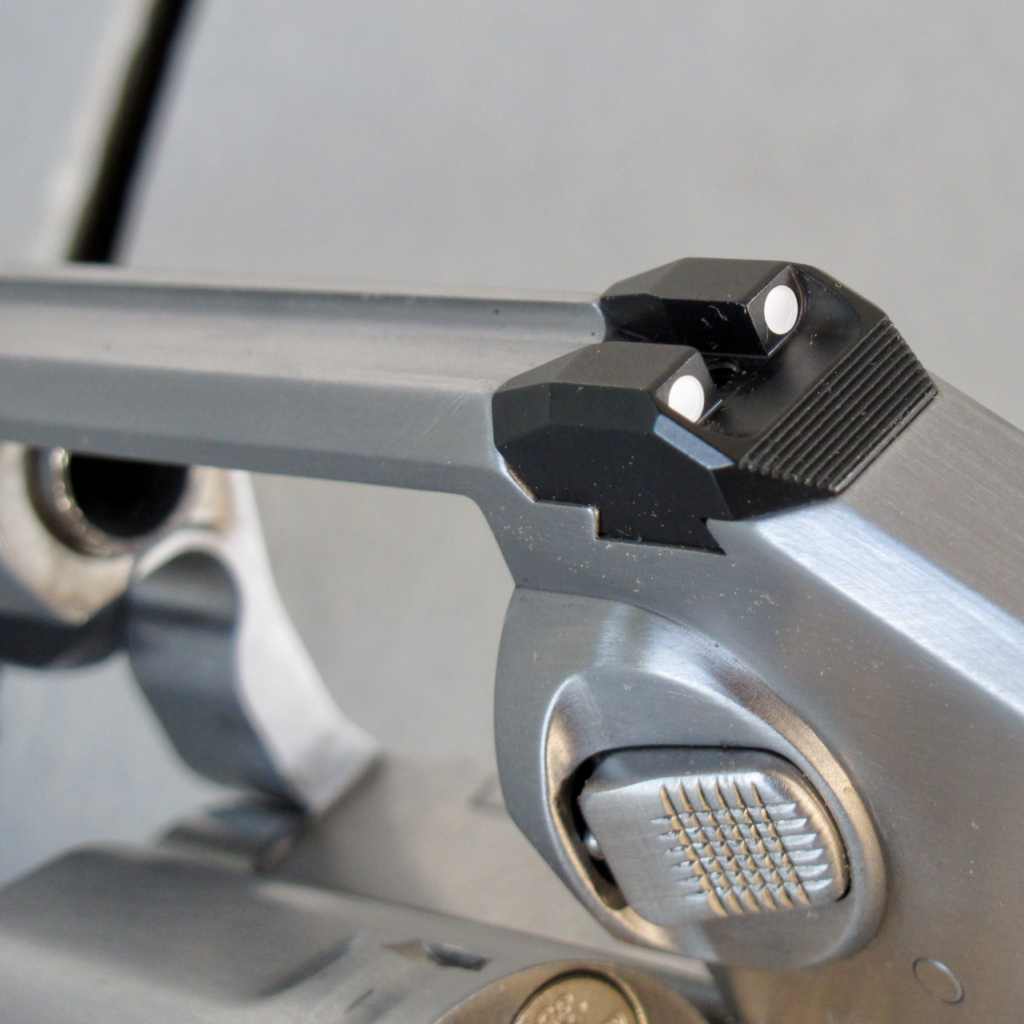
Criteria 4: Sufficient Grip Area
This one is easy! Most revolvers have a hugely variable grip area. One of the beautiful things about a revolver is the huge range of grips that fit popular makes and models. A revolver that is ideal for a man with huge hands can also be idea for a woman with smaller hands (and vice-versa). Grips can be changed to accommodate varying needs and preferences in regards to lengths, diameter, material/surface texture, and more. Realizing this lets you take size out of the equation of focus on factors that are actually important.
the Best Revolvers for Women
So what do I think are the best women? Basically, the exact same revolvers I’d recommend for men. A good revolver is a good revolver, and all other things being equal, it doesn’t matter whose hand its in. I’m going to keep this to a very short list, so if something doesn’t appear here it’s not because I’m denouncing it. Instead I’m just offering this as a “best in class” list.
Compact Revolvers: The Ruger LCR
The LCR is maybe the most shootable subcompact revolver on the market today. It comes in plenty of flavors; the version I would probably recommend to most would be the .357 Magnum. The steel upper on this gun adds weight that makes it quite a bit more shootable than the ultra-light .38 Special LCR. For all users, irrespective of sex, I would recommend loading even the .357 Magnum LCR with .38 Special ammunition. If recoil is still an issue, using wadcutters as your primary ammunition should make this gun comfortable to shoot by almost anyone.
I wouldn’t rule out LCRs in other chamberings, either. The LCR also comes in an 8-shot .22 LR and a 7-shot .22 Magnum. The .22 Magnum cartirdge seems to perform surprisingly well and has virtually no recoil. Be advised, though: the triggers on rimfire revolvers are generally much heavier than those on centerfires.
The .327 Magnum LCR loaded with .32 H&R Magnum (or even .32 Long) ammunition is attractive, too. It holds an additional round over the .38/.357 versions and .32 H&R Magnum recoils a bit less than .38 Special. The high cost of ammunition and difficulty finding it should figure into your budget if you’re thinking about this one, though.
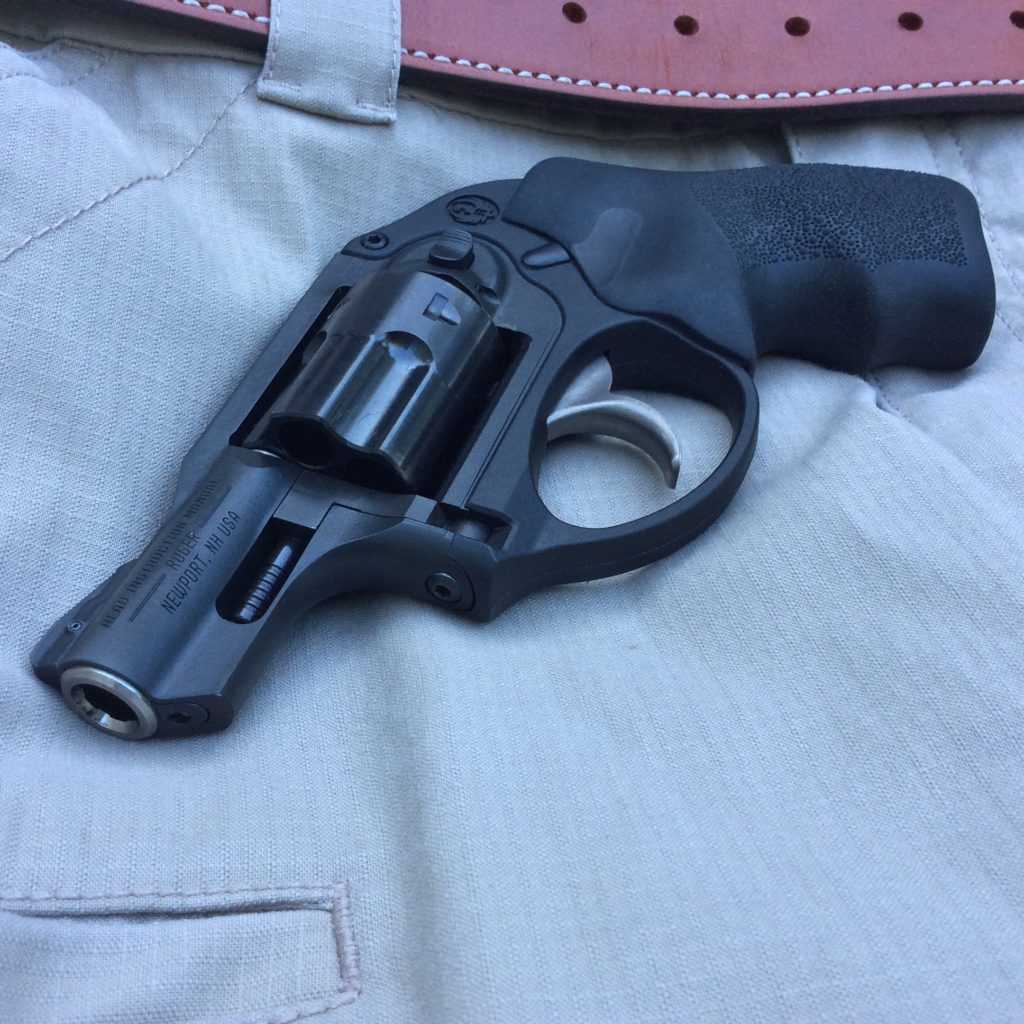
The LCR checks all the boxes above: it is a high-quality gun, the trigger is fantastic, and while the sights could be better, they’re not bad and the front blades can be swapped out. A ton of grip options are available for the immensely popular LCR. The LCR is also the most affordable gun on this list.
Honorable Mention: worth mentioning are the Kimber K6S and the Colt Cobra. I have no personal experience with the .38 Special-only Cobra, but reports seem to be generally good, and I do have quite a bit of experience with other revolvers in Colt’s revived wheelgun lineup. If the trigger in Colt’s other guns is any indication, the Cobra trigger should be excellent, and it is a six-shot gun, giving it a slight advantage over the LCR, at the cost of a bit more size.
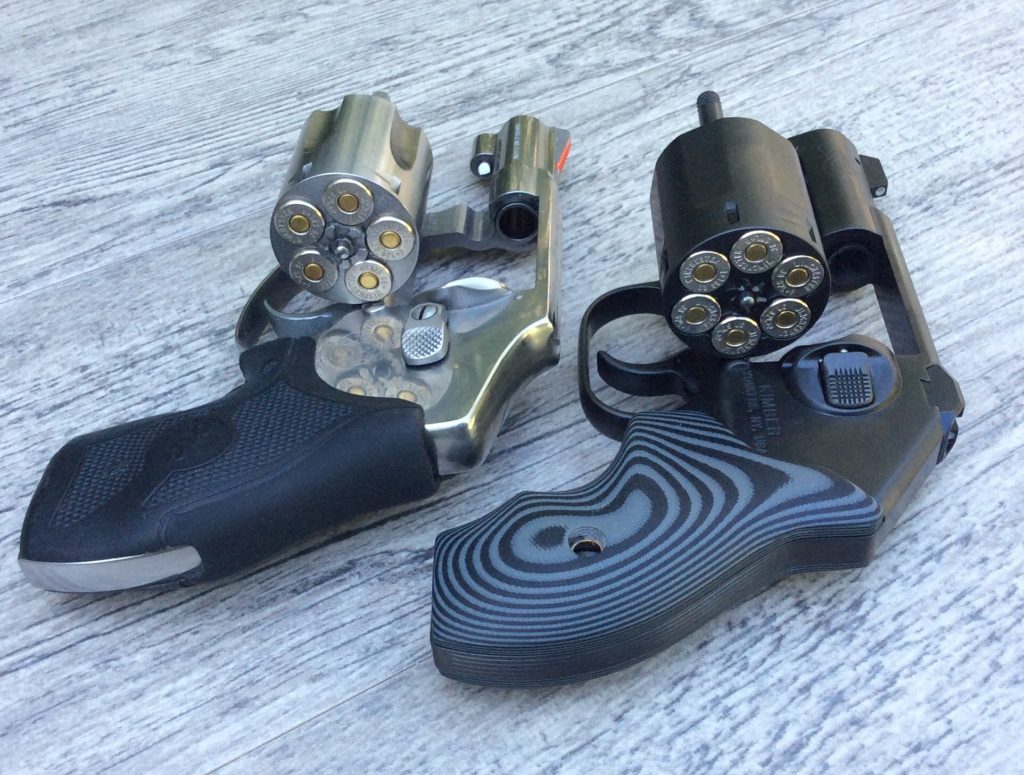
The 6-shot Kimber K6S is also worth considering here. It is heavier than the LCR, which is a mixed bag. On the on hand it’s easier to shoot, but on the other, it’s modestly more difficult to carry. It has a very good trigger, highly visible sights, and is available in 2″ and 3″ versions (and now 4″, though those veer outside the “compact” designation). My only reservation in recommending the K6S wholeheartedly is a growing number of reported firing pin breakages.
Mid-Sized Revolvers: Colt King Cobra
Moving up the size/weight scale just a bit, the 3″ King Cobra would be my next recommendation. My exemplar is absolutely one of the finest revolvers I’ve ever shot. Though the sights aren’t outstanding, they’re not bad. Additionally the King Cobra’s size, weight, and excellent grip make this an extremely shootable revolver.
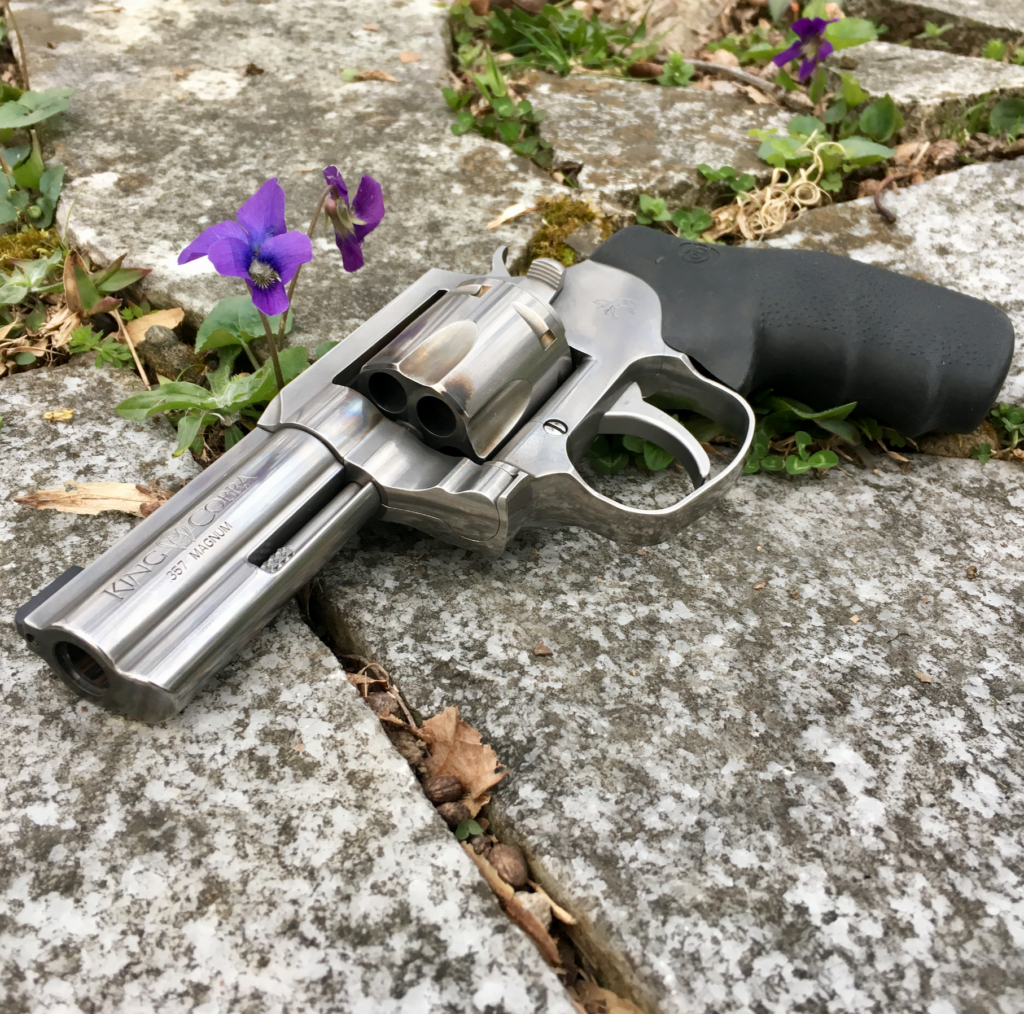
Equally important is the trigger. It is very light (~9 pounds), and very smooth. If you’re looking for a revolver that can do double-duty as a carry gun and as a strong home defense gun, you should definitely check this one out. This revolver is on a very short list of revolvers I regularly employ for self-defense.
Honorable Mention: the Ruger SP101 and used S&W K-Frames. I really want to like the Ruger SP101. It’s a nearly bombproof gun and it has an enviable track record. The triggers on them are quite a bit rougher than anything recommended thus far, and in .38/.357 you’re again down to five rounds. But its extra weight makes it an easy gun to shoot a lot, and an easy one to shoot well.
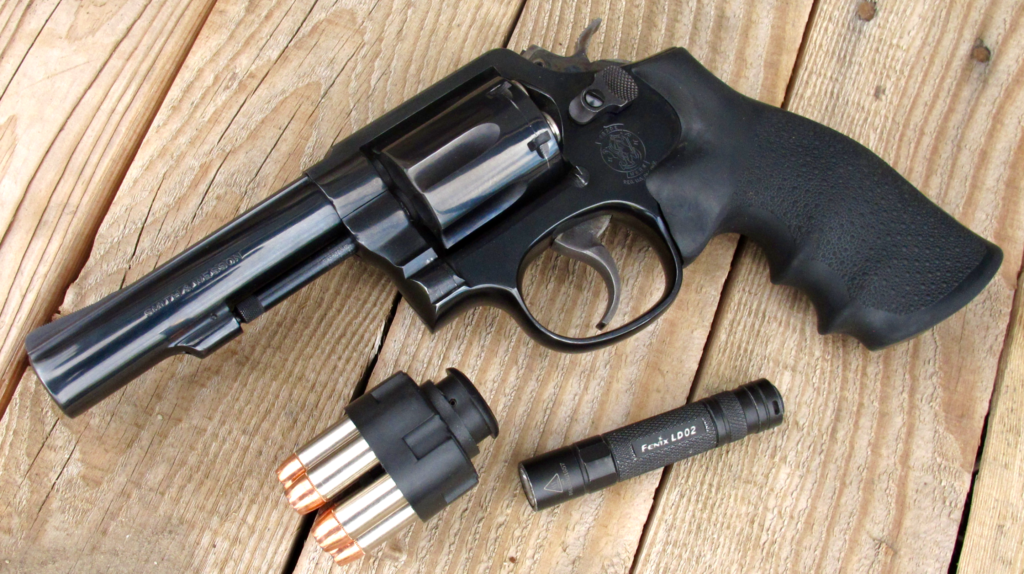
If you can lay hands on a used, pre-lock S&W K-Frame revolver you probably won’t be disappointed. These were made in a variety of barrel lengths. I’d probably shoot for a 3″ tube, but be willing to settle for a 4″ (if buying for home defense) or 2 or 2.5″ (if planning to carry). The K-Frames’ trigger design is completely different than the J-Frames’ coil spring. As a result they’re triggers are generally much lighter.
Full-sized Revolvers: The Ruger GP100
If you’re in the market for a full-sized revolver, my unhesitating recommend would be the Ruger GP100. I have had the opportunity to put a lot of rounds through both the .357 Magnum and 10mm Match Champion versions. Both impressed me far more than similar current offerings from any of Ruger’s competitors. I’ve also had the opportunity to fire some non-Match Champion GPs lately, and they’ve been just as impressive.
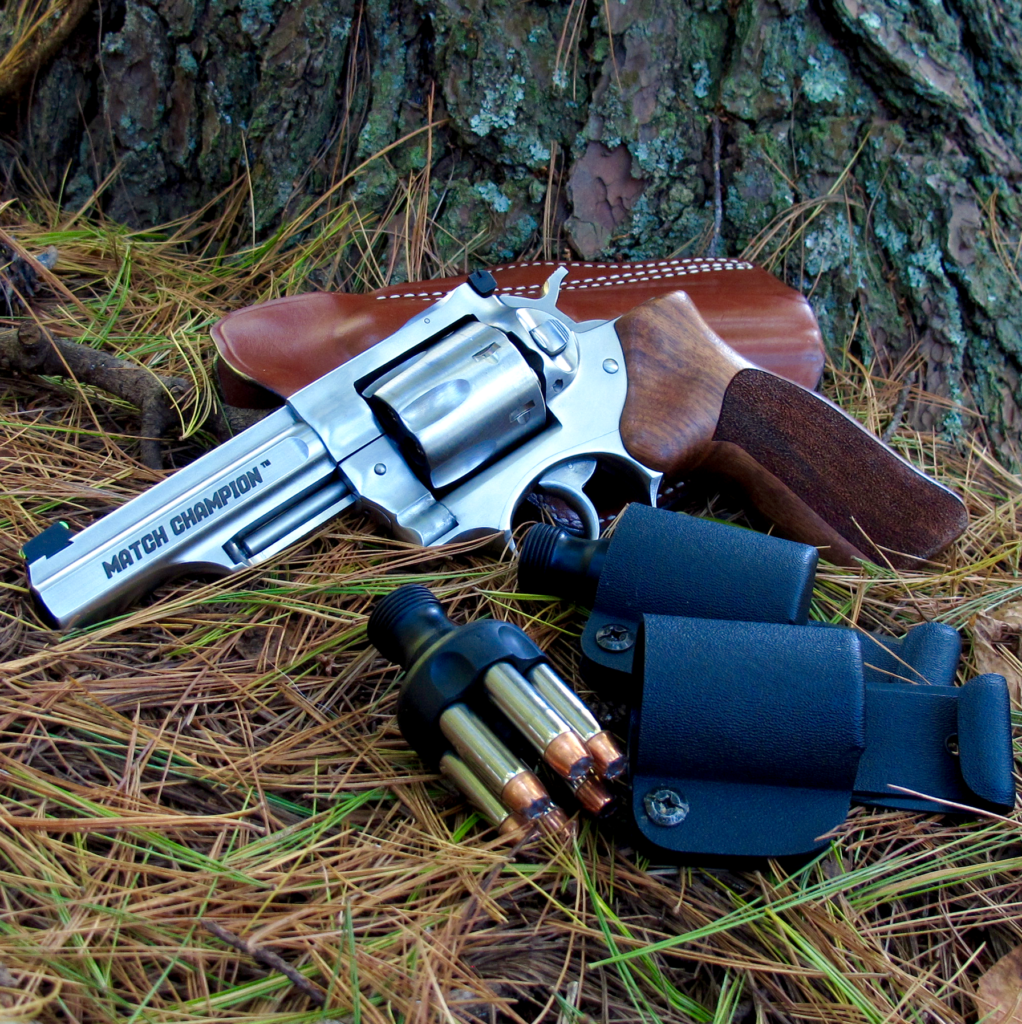
The GP100 is a bit bulkier and, subjectively, a bit more homely than a similarly-sized S&W revolver. But it will work. And work, and work, and work. The GP100 is no lightweight but it’s weight soaks up recoil like crazy, and helps stabilize it for accurate shooting. Also, Ruger’s peg-style grip frame supports a much broader array of grip sizes.
Personal Anecdote
Just one more thing: the point I’m making here is not, “use this guide to go out and buy your wife/girlfriend/whatever a gun without their input.” Would you want someone going out and buying a gun for you with no input, handing it to you and saying, “here’s what you’re going to carry”? Probably not. The woman in your life probably doesn’t want that either. She might put up with it, but I doubt she appreciates it very much.
Having a gun purchased for you based on intuition, wives’ tales, gun shop lore, or ingrained prejudices is not the best way to acquire a handgun with which you will be highly effective. It’s a recipe for getting something you don’t want or care about. It takes the recipient completely out of the decision process, which is not a good way to get someone take ownership of their own safety and security. The situation is even worse when the firearm chosen for you absolutely sucks to shoot. That can take someone from ‘disinterested’ to ‘interested in having nothing to do with that thing!’ For something so critically important – and potentially dangerous – I simply cannot understand this mindset.
I generally shy away from holding myself up as a good example of much of anything. Today, though, I’m going to compare and contrast myself and my girlfriend with a family member and his wife. I’m going to leave them nameless for a modicum of plausible deniability.
Me: my girlfriend is more than willing to go shoot. As regular readers know, she has attended Chuck Haggard’s Practical Revolvers and can actually shoot pretty well. She outshot some of the men in that class. But she’s still not super interested. I’m not going to run out and buy something for her until she says, “this. This is what I want.” At that point, the world is her oyster. Until then we have guns that she can run.
What is her favorite gun? What gun does she exhibit, by far, the best performance with? Despite having shot my Shield, Nighthawk 1911, the Kimber K6S, and several other smaller guns, her hands-down favorite is still my full-sized, “too big for women” S&W 686. So, the 686 is what gets left out of the safe when I travel. Her least favorite to shoot? My S&W J-Frame. Now, let’s look at the other side of the coin.
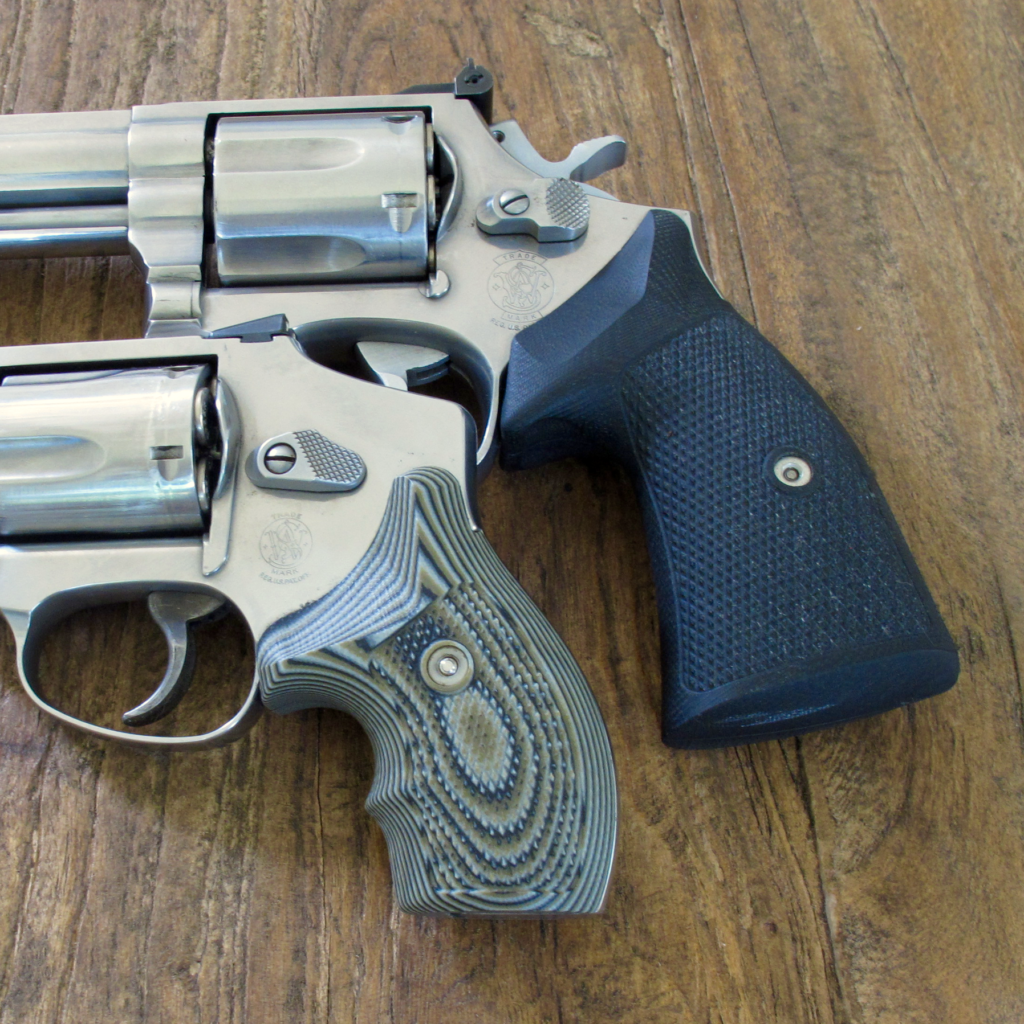
Family member: purchased his wife an Airweight, 1 7/8″ .38 as their home-defense gun and subscribes to the theory of “let her practice with the light stuff, then load it up ‘for real ’cause she won’t notice if she has to use it!” I am absolutely, 100% serious. He also loads the cylinder with interesting combinations of FMJ and JHP and probably at least sometimes, shotshells. Sadly, I’m still totally serious.
Neither he nor his wife have ever attended any handgun training whatsoever. They do not practice regularly, and are the people for whom a case of ammo would be considered a “lifetime supply.” Yet he is considering purchasing another Airweight revolver – this one hammerless – for her for carry. He is choosing some of the most difficult possible guns to shoot well. Why is he choosing these sub-optimal guns?
Because he doesn’t know what he doesn’t know. At least twice I have recommended checking out the M&P Shield or the Glock 42/43 (now I’d probably recommend the M&P EZ .380, too). His answer: “her hands are too small.” I confirmed with him twice that he has never taken her to the range or gun store to actually handle either of these options, so I’m unsure how he knows, but he KNOWS. If he took her to the range, let her practice with a few guns, and measured progress in some meaningful way, his opinions might change…or maybe not. With this mindset what absolutely won’t change is his wife’s proficiency in operating her own firearm.
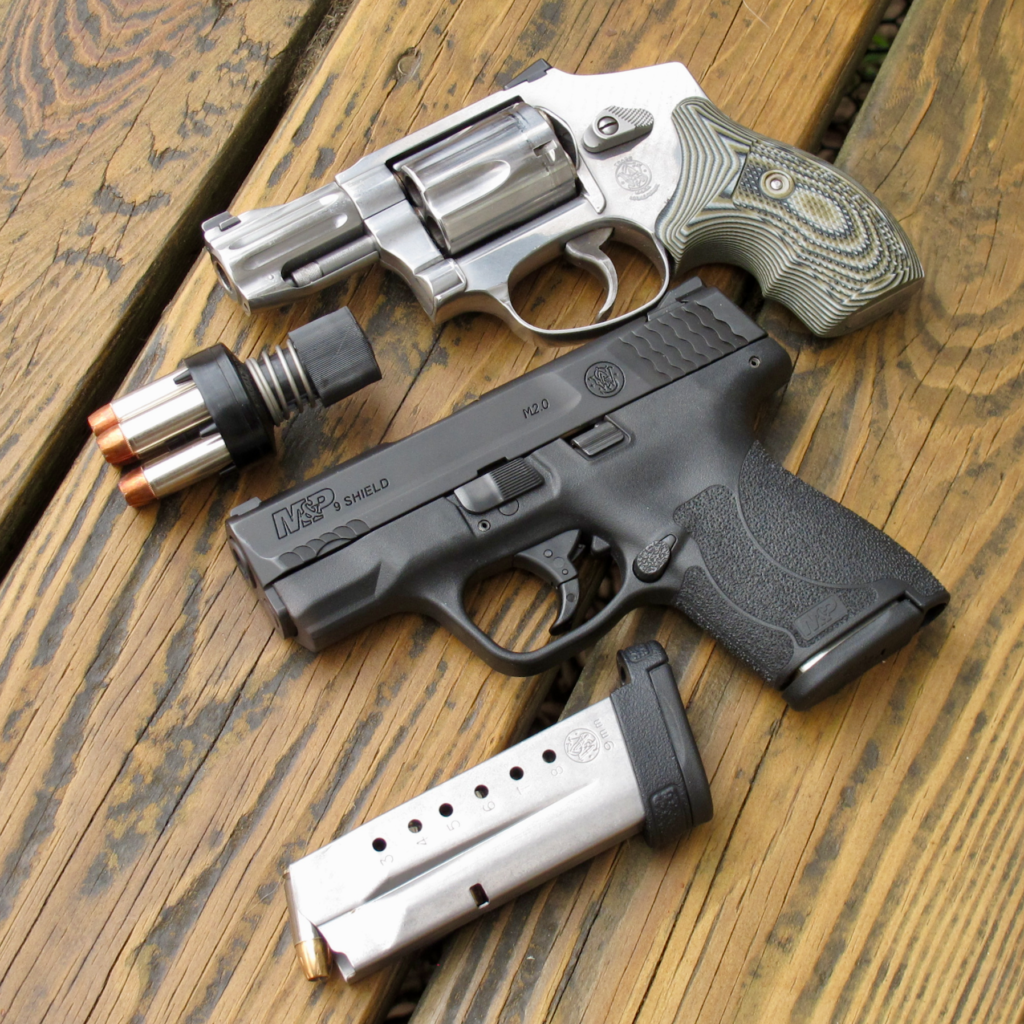
The Bottom Line
This article has felt a little more “ranty” to me than I wanted, but I hope it didn’t come across that way! There is really no such thing as “women’s revolvers” and if there were, I probably wouldn’t be qualified to write that article. Go back and re-read that list. This article could just as easily have been called “Revolvers for People” or “Justin’s Revolver Recommendations.” Choosing one’s self-defense firearm is incredibly personal, and that person should be involved in that decision, or making it for him or herself.
Holiday Schedule
First, I’d like to thank everyone for our third fantastic year here at RevolverGuy! Though I was planning on skipping a holiday break this year, life conspired to make me take one. It might be one week, it might be two weeks, but rest assured we’ll be back, early in the new year.
We’ve got a lot of exciting stuff planned for 2020! I have two T&E guns that I’m wrapping up reviews on now (one might be out in 2019 if I can get my butt in gear!). I have another T&E gun on the way, and Mike is all set for a trip out to fabulous Las Vegas, Nevada for SHOT. Stay tuned, and happy holidays and whatnot!

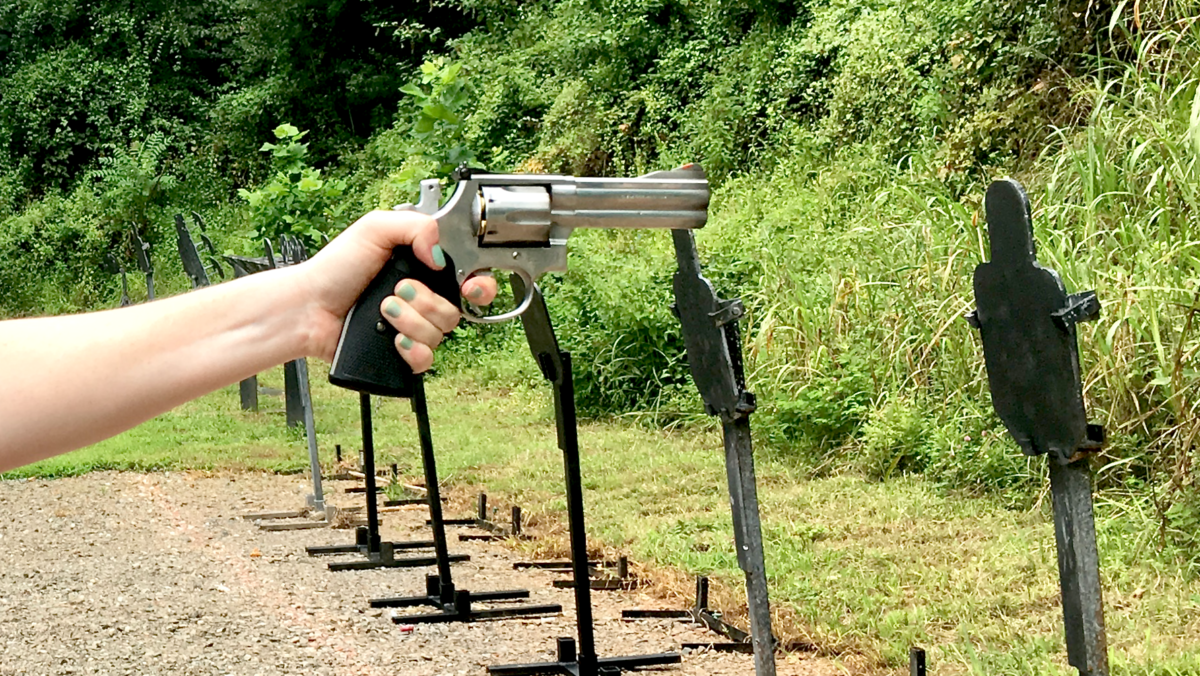
I must know your family member! My version carries a .380, off body, and at the range it jams a lot. For both of us. Yet he insists it will do its duty if the time comes. His wife carries an airweight Taurus she never shoots. Deep in a purse of course.
He trains at least, with his crappy gun. But why do so many owners consider a handgun a talisman that they can wave and, shaman like, dispel evil?
My wife and I, not knowing any better, in the late 1990s trained to shoot and shot a lot…on a stainless Taurus 85 snub! I’d never handled a handgun before that, and we figured all handguns shot that poorly. Over time we got decent at it up to as much as 50 feet. The snub improved its trigger feel after a few thousand rounds, and now it’s my fishing-vest gun. My wife does not and will not carry, save on her hip in the woods. Her picks? You nailed it: our 4″ K-Frame or Gp100. She has small hands and my mitts are huge, but the grips on these guns work for both of us.
Our moral? Because we knew no better, we kept up our practice, and we learned the limitations of a lesser gun until we got good at it. My wife does not want to rack a slide, but can shoot our 1911 really well after all the years learning on the Taurus. She shoots my carry gun, a K6S, well too. She picked up a long gun, an AR-15, for the first time ever and shot it well.
It’s the training, not the tool, but it’s still better to have a decent tool. They don’t cost much more than a cheap one and it may save your life.
Great insight! I don’t mean to criticize people that don’t know any better; you literally don’t know what you don’t know. I’ve made a lot of dumb decisions, in equipment choices and otherwise. What little knowledge I do have now is hard won on the backs of a lot of those mistakes.
In his case it’s putting his head in the sand and turning down sound advice that gets my goat!
Old School, I can’t let the opportunity pass by without responding to your mention of the .380.
In full disclosure, I’ve never liked that cartridge, and don’t feel comfortable trusting my life to it. However, putting that aside, I’ve probably seen more bad gun choices that centered around that cartridge than any other.
There’s this sense that since the .380 has less energy than the 9mm, it’s a great choice for a recoil-shy shooter who wants a semiautomatic. The truth, however, is that a lot of the blowback .380s kick more than locked-breech 9mms.
Similarly, many of the .380s are just plain challenged, when it comes to reliable operation—as you noted about your family member’s exemplar. Even the higher quality .380s tend to struggle a bit more than the 9mms—the average 9mm pistol seems to run much more reliably than the average .380, in my experience.
Of course, 9mm ammo is both less expensive and more plentiful than .380, which means you get get a lot more training for your buck. That’s important to keep in mind, because we don’t want that novice to stay a novice forever, eh?
Mike, wheel gunner that I am, the .380 never held any appeal beyond the gorgeous PPK. I like my semis made from metal and big, anyhow, since they would ride on my hip, like my 1911. If/when I get a 9, it will likely be a Beretta 92. Never seen them act up much, if at all. A pretty inbox model calls my name from time to time.
A large semi is a good gun if a woman likes the slide, for home defense. A friend of my ours who shoots with me from time to time brings along her nightstand gun, a 92. She is a superb shot and though she collects handguns, the others are range toys. The 92 is the go-to and I see why.
I’ll probably offend some sensibilities, but I’ll say it, with the understanding that I’m not trying to criticize anyone’s individual choice.
I think the PPK has gorgeous lines, but I also think they’re a poor choice for a defensive gun. The safety is in the wrong place and works the wrong way, the sights stink, the DA trigger stinks, they bite the hand, the blowback action accentuates the recoil, and they’re not particularly reliable.
At one time, they were as good as it gets, but they’ve been eclipsed by superior autopistol designs in the decades since. Frankly, I’ve always preferred a good J-Frame to a PP-series gun.
But they’re definitely sexy.
Good article, very relevant for those of us who are attempting to educate our ‘new to guns’ friends and loved ones as to the benefits of being armed, both at home and in public.
And yes: our first principle ought to be: allow the newbie shooter to shoot a wide variety of *suitable* (not tiny, not huge, not super-powerful) guns, and see which ones appeal to them.
In line with what you observe, I’d suggest that the first ‘great divide’ among new gun owners relates— not to whether they’re male or female— but rather, to how much time they’re willing to invest into familiarizing themselves and practicing with the gun.
For those who aren’t likely to ever become ‘gun people’, a revolver seems like the best option. I like used variations of the S&W M10, as guns which are ‘shootable’, relatively cheap, with an easy-to-master manual of arms, and a variety of available grips. .22 LR and .22 Magnum revolvers are also good choices, for the highly recoil-sensitive.
Recently I had a female friend— who strikes me as probably unlikely to want to invest the time it would take to learn to handle a semi-auto— talk to me about wanting to get a gun. I’m planning on taking her to the range and letting her try out some M10s I own— 3” heavy barrel, 4” pencil barrel, 4” heavy barrel— and seeing which (if any) she likes.
For those willing to devote the extra time to learning the somewhat more complicated handling protocol of a semi-auto, ideally I’d want to let them shoot some Glocks— 19, 26, 42, 43— along with the M&P Shield, SIG 365, etc.
(For those of us who are always on the lookout for another ‘good reason’ to expand our firearms collections, there it is: ‘I need that ____ for introducing new shooters to a wide variety of guns’.)
And since I’m a fanboy of the P-series SIGs, my list would also include a P239, P225, and P229 in 9mm.
But I think that for most new-to-guns folks, an older K-frame Smith might represent the ideal first handgun. That’s part of the reason I’ve amassed a modest collection of M10s: arming my family, friends, and neighbors for when the zombie apocalypse finally arrives.
Thank you! This needs to be said.
I’ve seen, way too often, the old tired tropes being pushed, generally by men but not always, about guns for women. If/when my wife shows interest in finding a gun for herself, we’ll figure it out in much the same way we all are figuring out what we want. I definitely didn’t start with a carry gun right off the bat, but a full sized 22 revolver with a long barrel. Why would I ever jump any inexperienced shooter straight into a punishing j-frame that will only teach him/her to flinch? One of the biggest culprits I see is people pushing the 327 fed. mag. (which I adore and own myself) as somehow a “woman’s caliber” … That stuff hurts my palm indistinguishably from a 357/38 in a j-frame, at least in my experience… (still need to find a better grip for my lcr at some point). I shoot almost exclusively 32 long in my 327 lcr, and that makes it a fun gun for me. But that won’t necessarily be the case for anyone else, including my wife.
You’re absolutely right – these tropes aren’t always pushed my men. The article I referenced in the first paragraph was written by a woman. Bad information seems to be unconfined by sex.
Amen, Justin. This is something that has needed to be said for a long time now.
Justin, Thanks for the great article!
We should no more chose someone else’s handgun than their clothes or shoes. Having opportunities to try different options is good. The advent of rental guns at a range can save us from a purchase we will regret.
Jim,
Many thanks, buddy! You’re absolutely right about rentals, or for that matter just asking around until you find someone that owns something you’re interested in. If “family member X” cared, I could probably get him and his wife in touch with just about any handgun for an hour or two. You’ve gotta want it and see the value, though!
I learned many decades ago in teaching civilian classes a way to derail the he-man bloviating neanderthal picking out a gun for the ‘little woman’ back in the cave.
I would ask them if they choose their wife/girlfriend shoes, makeup, underwear, perfume, and tampons (the last one zings ’em). Invariably they say some variation of ‘H3ll No’, at which point I tell them not to even THINK about trying pick out their gun.
With my better half, we had a ‘perception’ quandry – an American cop marrying an upscale Limey Bird with ZILCH knowledge of and cultural apprehension about firearms in general. Sooo, we started with basics and my Ruger Mark I. Several thousand .22 rounds downrange and learning front sight, trigger press, followthrough in addition to getting comfortable with handling, and operating a contained ‘explosion’ going on in front of her hands. Over a few years, she tried nearly rental gun at various indoor gun ranges, and worked her way up the power chain, eventually mastering my Colt Gold Cup .45, my S&W M13 – even with magnum loads, and even my P-38s (despite LOUSY triggers).
Of all the guns she shot, she proclaimed that her ideal carry gun would have the power of a .50BMG, the magazine capacity of a Minigun , and the recoil of a .177 pellet gun. Factoring in reality and physics, and trying innumerable platforms for regular use, she settled on a S&W M3913 in 9m/m that remains her daily companion and shooter.
Guys — let HER pick out HER gun. You just fork over the cash for it, and get her training and ammo.
Great thoughts. And for what it’s worth I’m *kind of* on the lookout for a 3913. I thought I saw one at a gun shop I happened into recently. Unfortunately it ended up being a 6906; the double-stack doesn’t quite do it for me like the single-stack 3913. Sorry…squirrel moment.
Anyhow, you’re absolutely right about asking about shoes, makeup, etc. You have me scratching my head asking, “why didn’t I think of that?”
My wife and I went through this. Her first husband steered her very hard into a Taurus 24/7 in .40 S&W for her first hand gun and she hated it. When we decided to get her something that she actually liked and could carry, I tried to do a couple things differently. First off, I pointed out that her brother is capable of Cerakoting any gun, so ignore color. If she wanted pink, we could make it pink, but it was more important that she pick a gun that she liked enough to pay someone to turn it pink. We started with her trying my guns and the plan was to go to the rental range to try some others once we had an idea for recoil tolerance, acceptable trigger weights, etc. In the end, we didn’t get there because she shot my SP101 and decided that she had to have one. We did add pink grip panels to it (never had the whole thing Cerakoted). In the end, I think she ended up with a great gun, but more importantly, she agrees.
I’m going to throw in another opinion related to new gun people picking guns. Let them dry fire the gun in question a few times. Get snap caps (or #4 wall anchors for the rimfires) if you are concerned about damage to the gun, but the shooter should not be figuring out what the trigger feels like (especially for a double action trigger) while there is a live round under the hammer or striker.
Great stuff here, Justin!
You mentioned it already, but I’d like to emphasize that rimfire revolvers might seem like a good choice for the non-dedicated shooter, but they come with certain baggage. The light recoil is a plus, but the mainsprings on rimfire revolvers have to throw the hammer with more force for ignition reliability, so the trigger pulls are generally much heavier than their equivalent centerfire brethren. A S&W 617 (.22 LR), for example, will generally have a much heavier trigger pull than a Model 66 (.357 Mag).
It’s been my personal experience that it’s often easier to teach the novice shooter how to handle and be comfortable with the increased recoil from a centerfire revolver, than it is to teach them how to handle the heavier trigger pull on the light-kicking rimfire.
Another thing I’d like to reinforce is that just because it “feels good” in the shooter’s hand, that doesn’t make it a good fit. We’re constantly told that the best gun is the one that feels good when you grasp it, but the part that gets left out is the underlying assumption that you have to be grasping it properly before you gauge how it feels.
To illustrate, you can hold a hammer high up on the neck and it might “feel good,” but that’s not how the tool is designed to be used, and you won’t wield it efficiently, so your measure of how it feels doesn’t mean squat when you grip it that way. What you really need to do is hold it properly, THEN evaluate whether it feels “right.”
Unfortunately, we often let novice shooters grasp a gun improperly when they’re sizing it up, so they don’t get a good measure of fit. For example we’ll let a small-handed shooter “cheat” the grip by rotating the hand around the gun, to allow the tip of their finger to reach the trigger. This might “feel good” in dry fire, but in live fire they’ll struggle to control the gun’s recoil, and they might cause damage or discomfort to the base knuckle of their thumb, which will take a pounding. Of course, their trigger control will probably stink, too.
Similarly, we might allow a small-handed shooter to shift their grasp so they can reach controls like slide stops, magazine buttons, safety levers, and so forth, when what we really want to measure is whether they can reach those controls from a proper firing grip.
So, the novice’s evaluation of what “feels good” doesn’t amount to a hill of beans until we show them the proper way to hold the gun, first. It’s only when you grasp the gun properly, that you’ll be able to judge if the gun is a good fit for the hand size, and if it “feels good” to the shooter. Even then, the best-fitting gun might not “feel good” to the novice, because the novice doesn’t know what “good” actually feels like, yet!
So, I know that people are trying to be helpful when they suggest a shooter should pick the gun that feels best in the hand, but there’s a few asterisks that should really go behind that statement. There’s certainly some subjective measures that are a part of choosing the right gun for a novice, but there’s some careful coaching that’s required, too.
Agreed, “pick what feels good,” is a half-truth. As I alluded to (but did not elaborate on) measuring progress by shooting a few guns against some sort of accuracy and time standard is really effective at teasing out what works for a shooter and what doesn’t. One could drive a nail holding a hammer by the neck if there’s no standard. If the task is “drive a nail” the shooter might pick a 2d finishing nail and drive it into drywall; holding the hammer by the neck would work, and probably even seem to work well. The shooter could probably even drive that nail with the butt of the hammer’s handle. This is kind of similar to saying, “shoot it!” Accepting any hit, anywhere, in any amount of time can make things like NAA revolvers seem like good choices.
Telling the shooter he or she must drive a 16d coated sinker through the flat of a 2×4 and into the end of another, exactly 16″ inches from the last 2×4, and it most be done as quickly as possible changes the game a bit. Holding the hammer correctly – and having just a bit of technique – becomes really important. “Start at the low ready. When I say ‘fire,’ fire three shots, making sure you hit within this ring. No rush – only shoot as fast as you can shoot accurately! We’ll do this a couple of times, then try that other gun and compare the results.” At three yards this is a pretty simplistic drill for most of “us” but for a new shooter? This could speak volumes.
Getting this point across to some seems, well, problematic. And that’s another problem with “family member.” He’s very into he idea of “purse guns” and having a gun in his pickup and the like. He always imagines being able to go get a firearm from somewhere else, so he can’t really imagine having to use a gun quickly. Interestingly, this walking encyclopedia of gun shop ‘wisdom’ also sees no need for accuracy; I’ve heard enough statements along the lines of, “she can just point and shoot til it’s empty*” to verify this. Again, I don’t know how you make him realize that yes, being able to shoot that gun well, and doing so somewhat quickly actually matters…
Then again, there is some truth to going with what feels good. Some guns feel flat out “bad.” Though my buddy Rich Brown is constantly pushing me to a Glock 19 (if I could count the times he’s said [unsolicted], “that’s the problem with a 1911/single stack/X brand…”), my times on a first shot out of the holster increase a bit with the G19, and after about 5 or six rounds I have to reacquire my grasp. The grip is too large for me and it feels terrible. But I agree with your original point; just feeling “good” or “bad” by itself is an unreliably indicator.
*I also know it sounds like I’m just slamming this dude. If I were reading this I would probably be thinking, “Justin is just setting up a straw-man argument. Nobody really believes/advocates that sort of thing in this day and age.” I s**t you not; this guy literally picks up every gun rumor/legend/sea story and runs with it like it is the gospel handed down from heaven on high. My favorite: ten years after his tour in Iraq he’s telling me about the AK he bought. “Got rid of my AR. That M16 was like taking care of a dang kid or something – always having to clean it, never knowing what it was gonna do… I woulda traded two of ’em for an AK if I coulda!” As it happens, he and I crossed paths in Al Asad in 2004 near the end of his deployment, and I don’t remember any complaining about his M16 then… And here Christmas is just around the corner – I wonder what groundbreaking firearms concepts, ballistic science, and self-defense case law I’ll be exposed to this year? Ok, I’m done. At least for now!
I like how you developed that hammer analogy! Good stuff.
One more thing I forgot to mention: If I understand you, I disagree about reaching controls (other than safeties) from a firing grip. I can’t reach the slide stop or magazine release even on a 1911 without shifting my grasp. I can reach the slide stop/release, but can’t actuate the magazine release on a Glock 19 without shifting my grasp. This requirement would preclude me from carrying/shooting the vast majority of duty-sized/duty-caliber handguns, and my hands aren’t that small.
Justin, I also don’t reach full size auto controls from I firing grasp with my right (smart) hand.. I’m 50/50 on using my off hand thumb for this… any thoughts?
Riley, my thought is for a safety, that’s unacceptable. The shooting hand must be able to operate it.
For a magazine release, I wouldn’t recommend it. I’d rather see someone shift their grasp to reach the magazine release with their shooting hand thumb, than use their support hand thumb, because the support hand has more important work to be doing (fetching a new magazine). Alternatively, you might reverse the magazine catch (if possible) and just train to use the index finger on the shooting hand to drop the mag, or (worst case) swap the part for an extended release button.
For a slide stop/release, I have no problem with using the support hand. The support hand thumb naturally flows into position to drop the slide after it completes a reload, so it can actually be even more efficient than using the shooting hand thumb—especially if you’re a “thumbs forward” shooter. After the new magazine is seated, the support thumb can swipe the slide stop/release as the support hand moves into position to wrap around the shooting hand and reinforce the grasp.
Just my two cents.
I would agree that shifting to reach controls other than safeties is ok, but, all other things being equal, I would personally prioritize guns where there is no or less shifting for those tasks.
I’m very curious about why this is. Would anyone mind elaborating?
For me, it is simply that it is more comfortable, natural, and slightly faster to use controls that I don’t have to shift my grip to reach. That said, I have to shift my hand on almost all semi-autos to reach the mag release since it is usually under the web between my trigger finger and middle finger (I shoot left handed after all). Also, I am use to using my trigger finger to push up on the slide lock/release on my 1911 to lock the slide open when the gun is empty with no mag. I can do that comfortably, safely, and without really thinking much about it. On my SIG P250, the slide lock/release is where I am used to a safety being, and it really isn’t designed for you to push it up with a firing grip. I have to be just slightly more conscious of my muzzle in that situation.
I also feel more secure without having to change my grip. I haven’t ever really thought I was going to drop a gun while changing mags or releasing the slide, but someone trying to fight my gun from me in those situations would have an easier time.
Justin, the safety is primarily what I had in mind, but to a lesser extent, the other controls apply as well.
I think we all agree that the safety has to be operated from a firing grasp. No issues there.
I accept the fact that the other controls might require some minor adjustments to reach, and have no problem with that. However, I’ve seen some gun-shooter combos where the adjustments required are so severe, that the gun winds up getting pointed in unsafe directions (a favorite here is the right-handed shooter who has to rotate the gun’s muzzle to their 9 O’Clock just to reach a magazine release or slide stop), or their ability to hang onto the gun gets dicey because the grasp is so compromised. I think that’s clearly unacceptable.
If we’re trying to find an optimum gun for a shooter, then I think it’s reasonable to eliminate guns that require these large adjustments from a firing grasp to operate controls. If you need to shift a little, we can work around that, but if you need to make exaggerated movements that essentially destroy the shooting platform, then I think you need to move on to the next candidate and find something that fits better.
Gotcha. Safety is not a problem for me, I’m mostly thinking of the slide stop.
My military handgun training (which was considerable) recommended using the support-hand thumb to release the slide stop. I also know of a lot of well-regarded trainers who recommend addressing the slide stop with the support hand. Just to be sure I double-checked Kyle Lamb’s “Stay In the Fight” and he provides similar guidance.
I pulled several guns out of the safe this morning, just to see. I’m so used to hitting it with my support thumb I thought I might’ve been wrong. Turns out I can touch the slide stop on several semis (Glock 19, M&P, M&P Shield, and a Bersa Thunder I’m babysitting for a friend who moved to London), but touching and actuating are two different things. With the thumb straight along the frame I can’t seem to release anything with my right thumb; the leverage just isn’t there.
Like I said, some really experienced guys say the correct way to do it is to use the support thumb. I’m sure there are competing views, and you probably won’t be in bad company either way, as long as you put the hours in.
For what it’s worth, Kyle Lamb (who I have the utmost respect for and absolute confidence in) also recommends shifting the gun to address the magazine release. Again, this dovetails with my military handgun training.
Lot of truth here. I have small hands, and can’t reach the mag release, slide release on most semi autos I have been issued (SigP220, Glock 22) or even my carry 1911, right handed. Fortunately, I’m a lefty, and use my trigger finger for these controls, and can reach ’em just fine. Now, I wouldn’t have you switch hands, but…😜
Justin, it sounds like we’re all tracking the same on the slide stop/release.
One general observation about LE and MIL training is that the troops often don’t get a say in what they’re using. They get issued the equipment , and they have to find the best way to use it, even if it doesn’t fit. By necessity, they have to adopt a lot of workarounds.
That’s much different than the citizen novice, looking for a gun. They have much more latitude, and we can be a little more selective about fit issues.
If that’s a workaround, a lot of people – not just mil and LE – are going to need it to stay out of sub-compact firearms. My hands are on the smaller size but aren’t small. Neither the Glock 19, the S&W M&P9 with “small” backstrap insert, M&P9 Shield, nor the 1911 are “large” pistols, yet all require me to shift to grip to manipulate controls.
I would be extremely hesitant to include that as a handgun selection criteria. I think it’s going to steer a lot of folks to subcompact and sub-subcompact guns. When we dip into that class of firearms my number one criteria has a tendency to suffer: reliability.
Also, I’m just generally curious what the aversion to shifting the gun is. Not to blow my own horn but I can probably reload faster than just as reliably as 98% of handgun owners.
Yes, my issued is a full size M&P, which I don’t usually carry off duty -partly because it’s honking huge! Plus I just prefer revolvers. Sorry, Justin, for pulling this off topic.
Justin,
Nicely written article. I will admit that when I would look at revolvers in gun stores, my eyes immediately gravitated to the pink and purple ones. Why? Because those are my favorite colors. I was soooo excited to see revolvers in pink and purple. I wanted one! For about 15 seconds.
My mind then went to, “Oh, hell no. I am NOT going to be a “girly-girl” pink/purple revolver shooter. Who would ever take me seriously?”
I took myself to the gun store. I dry-fired multiple revolvers until I settled on a couple I wanted to live-fire in their indoor range.
Yeppers. I ended up with a Ruger LCR in .357. I shoot .38 special and wadcutters. MY DECISION. Well, Mike turned me on to wadcutters. Thanks so much, Mike! My second revolver is the Ruger SP101.
The Ruger LCR goes out the front door with me every day – in my Dooney and Bourke fuchsia crossbody purse. I still carry PINK – but not on my firearm. Because almost all of the purses I carry are fuchsia (mostly), no one would even think I was carrying a GUN. The purse is small enough to not be bulky/heavy, and I selected the size to hold my LCR, two reload strips, and a CATS tourniquet. An outside zippered pocket holds my flip-phone and a lipstick.
WGJ
Judy,
It’s really, truly an honor here that the stuff we write helps anyone. It’s sometimes easy to lose sight of what we’re doing here. At the end of the day it’s about sharing knowledge – some hard won, some “borrowed” from classes we’ve taken or books we’ve read, some accumulated alongside experience – with others. The fact that Mike turned you on to wadcutters and it made an appreciable difference for you is profoundly meaningful. I appreciate you pointing that out. Occasionally we’ll get a reminder that we’ve made a difference, big or small, in someone’s preparedness for “the gravest extreme” and it’s always powerful.
Justin
Justin, I think we’re on the same page, but not communicating well. The “fit issues” I referred to being “selective” about are those where the gun is simply too large for the shooter, which requires them to adopt workarounds that decrease safety and cause significant problems with control and efficiency. Examples include the exaggerated adjustments that I’ve previously mentioned, such as having to cheat the grip too much to get a finger to reach the trigger, or having to completely rotate the gun’s muzzle close to the 3-9 line, in order to reach the mag release. If a person with the ability to choose his platform is experiencing those kinds of problems, I think they need to look at a different gun. A cop or soldier might be stuck having to make do, but an armed citizen with broad choices shouldn’t have to accept those limitations—the gun is simply too big, and they’ll be better off with one that fits better.
The minor adjustments that are frequently necessary to reach controls are not a Pass-Fail for me, outside of safety levers, as I discussed above. The small adjustments you are having to make fall within the bounds that I’ve described, and aren’t a problem as far as I’m concerned.
I think we’re in agreement, but the limitations of the written word have given you the impression we’re not. Rest easy, I’m not trying to banish you into subcompactland. ; ^ )
Mike, if not the LCR, it’s Glock 43 or SW 3913, off duty (and back up) all of which fit me well! A lot of times I slingshot the slide anyhow… Not sure why. That said, I have to adjust from firing grip a little to manipulate the slide stop, certainly not 3-9 line. Thanks everyone for the input though.
WG Judy, sounds like you are well prepared!
My wife and I have the same trigger reach, though my fingers are a bit larger, just not longer. Twenty five years ago I took my soon to be wife shooting at her request. I had 1911, Beretta 92, SW Mod 66, 36, 63, 686; Colt Python, Sig P230 (380). She only liked the Model 66 and the Sig P230. Why? They fit her hand and she could shoot them. I left the range that day minus one Sig. Moral of the story.. comfortable grip, confident shooting, accurate results out of handguns from top manufacturers. What else could you want.
Yeah, my wife took over my SW model 13… I’m glad she found something she likes.
Working a the gun shop, it was amazing how often he would pick out a gun for her, because ‘That’s just what she needs’, then within a week or two they would both come in, with the ‘just what she needs’ model, to trade it for what she actually wants. I used the shoes and purse and underwear analogy a lot; hadn’t thought of the tampon part. Wish the store was still open so I could try it.
BTW, there is a viable tactical purpose behind those San Francisco-colored guns. If a girl pulls it to defend herself, the big meany attacking her will likely stop and say ‘Aw, ain’t that cute?’, giving her time for a couple extra shots. If a guy pulls a pink or lavender gun, the bad guy will start laughing so hard it gives time for a couple more shots.
Good article, good points. Wish I had room for more gun shop stories. Ace
Use all the room you need – there’s no limit here!
Ace, though it ain’t pink, my Kimber came to me like new from an LGS selling at a show. I am pretty sure that is how I got a barely fired K6S so cheaply from the original dealer: hubby bought it “for the little lady,” wife hated it after a dozen rounds of .357.
My wife has tested every gun before we purchase, save for this one and a big old Blackhawk. She enjoys enjoys shooting the Kimber with .38, including +p rounds.
I wish I could post a few photos which confirm this excellent article.
My wife and daughter both love medium frame revolvers, particularly when fit with Pachmayr Grippers.
My wife prefers our V-frame 4” Colt King Cobra, and my daughter our S&W 4” 66-2. We have a lot of fun shooting steel together, and invariably those are the guns they prefer. Neither of them has any interest in shooting single action. I am blessed. : )
Sir: Thanks for the good article. To follow-up with an example, my wife’s fav non-carry revolver is the 6-inch Colt King Cobra (no longer mfr’d). She also has the 6-in Python (#2 choice) in the same case in her vehicle. We call them “The Twins”. She can pick up the Cobra cold after several months away from practice and place .357 mag rounds within a silver dollar diameter at 25 yards. She just turned 65. She always says “It always shoots where I point it”. Therefore, I do not interfere – nor let other range “experts” interfere – with how she shoots the Colt with all the “rules” on stance, moving and shooting, etc. If it’s working don’t fix it. (Exception of course are any unsafe habits.) Practice. Practice. Practice. One of her carry’s (purse) is of course not as optimal as the bigger Cobra: tiny NAA .22mag revolver in certain purses, or the S&W Featherweight with .38spcl otherwise. We both carry doing yard work in the heat & humidity, too, so have to keep them lubed. I think everyone needs guidance and recommendation when starting out: age, medical issues, hand size, dominant eye, left or right handed, etc. BUT trying out many types of hand guns i.e. range queen rentals is essential before making the purchase. I have found that taking folks to gun shows where I know reputable dealers and trusted ex-mil folks is useful. Many questions can get answered and new information abounds. In all a personal decision. One last thing: as you’ve heard ad nauseum, beware the person who owns one gun. My 2-cents.
2 quick notes:
Outstanding article! My sister routinely carries a G42 but wanted something for off body carry. I offered up a slew of handgun and ammo options at a range day, and she settled on an LCR in .357 Mag, preferring a couple of good .38 Spec loads. She’s petite, knows very little about guns, but appreciates their utility; the features you described are exactly why she chose the LCR over other options. She could shoot it pretty darn well.
Second, what is this mention of K6 firing line breakages? It’s my EDC…
Update: I re-read the K6 review article and found the relevant parts about the firing pin breakages, now including the May 2019 updates. I’ll use snap caps for dryfire practice from now on. Thanks for pushing excellent articles about relevant topics. I used several reviews on this site to make a couple purchases and I’ve been very happy with the results.